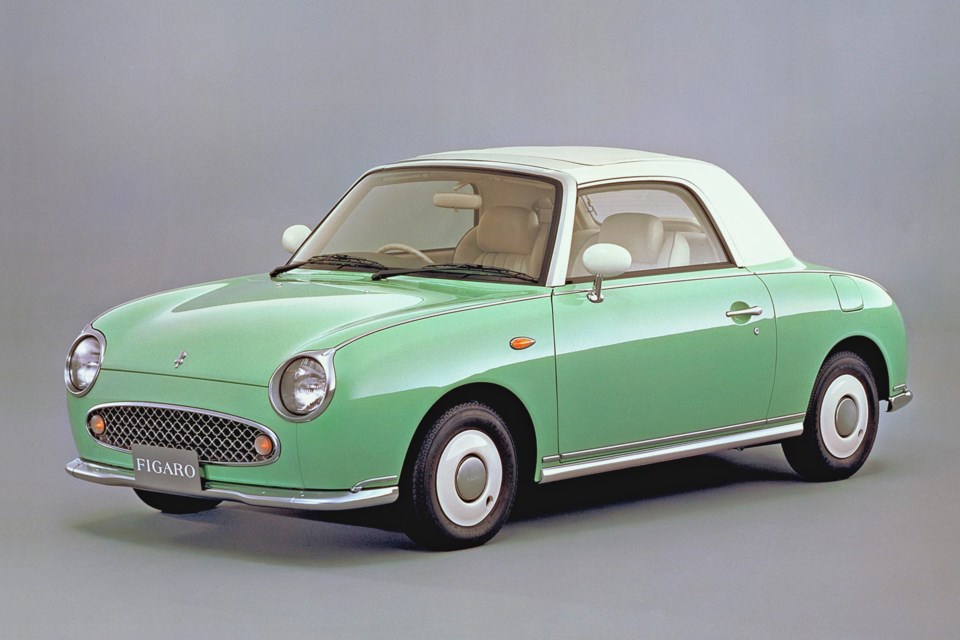In the 1980s, Nissan had something of a problem. Japanese consumers of the ’80s were flush with cash and looking for something with a bit more zip.
This was especially true of younger buyers, who took one look at the efficient Nissan March, and promptly headed for the nearest Honda dealership.
Nissan needed something interesting. The result was four of the weirdest cars the world has ever seen.
In the 1960s, Japanese culture was as buttoned-down as America’s was in the ’50s. Conservatism was the order of the day, and anyone with a wild spark in their eyes tended to head for California.
One such young man was Nakao Sakai, an art school graduate who had become fascinated by the underground world of Japanese tattooing. The subject was taboo in rigorous Japanese society, and there was also little place for it in mainstream American society.
However, in the wild, free-spirited San Francisco of the 1960s, Sakai found his own California gold rush. He began printing T-shirts with his tattoo-based designs, and the public couldn’t get enough of them — at one point, he claims to have been making $300,000 a month.
It didn’t last, of course, but you wonder if some of that California spirit seeped into Sakai’s consciousness to eventually inform the cars he would go on to design.
Decades later, Sakai was working out of his own studio when he was approached by Nissan to develop a car. It was to be a concept, one of three shown at the 1987 Tokyo Motor Show. The first was called Prototype A and it was designed by Nissan’s in-house department. The third was called Prototype B2, styled by an Italian group. Sakai’s car was called Prototype B1, and it was an instant hit.
It was so popular Nissan elected to put it into production under the name Be-1. They arranged for a subcontractor, the Aichi Machine Industry plant, to hand-assemble the bodies and based the car on the humble March. They called the project “Pike Factory.”
The Be-1 was probably the first retro-styled car. Compact and cute, it had round headlights like an old British car, a cartoon-sized white speedometer and colour-matched interior panelling. Power, to use the term in its loosest possible sense, came from a 987cc single-overhead-cam, eight-valve four-cylinder engine. It made 52hp and came with either a five-speed manual transmission or a three-speed automatic.
Happily, the Be-1 also weighed less than 1500lbs, which meant it was actually sort of interesting to drive. If you’ve ever zipped around in an original Micra, then you already know the feeling: feeble but fun.
The quirky looks, low price, inexpensive operating costs, and cheap insurance all combined to make the Be-1 the hottest car to have in the late 1980s. The Pike Factory would only build 10,000 of them, but they received orders for at least 100,000. A lottery had to be set in place — you couldn’t just buy a Be-1, you had to win the chance to pay for one.
Given the success of their experiment, Nissan decided to go ahead and have Sakai design two more vehicles for them, both still based off the Micra platform. The first was the Pao.
Most common of all the Pike Factory cars, the Pao is weird in the best way possible. Supposed to look a bit like a Renault 4, it has stamped-looking sheetmetal like a VW Thing, a clamshell rear hatchback, external door hinges and rear side windows that flip up. Like the Be-1, the Pao was immensely popular and sold out in three months.
The one to have was probably the five-speed manual, and the press materials of the time show this plucky little car venturing among dinosaurs in a Lost World setting or fording through deep snow drifts. Wishful thinking, I’m afraid, what with the 12” wheels and miniscule ground clearance.
Still, it’s absolutely adorable — a puggish, puckish car that’s as cheap to run as its more-conservative Micra cousin.
The third car Sakai would design for Nissan was the Figaro, a compact two-seater with a retractable roof in the style of a modern Fiat 500 convertible. Svelte and stylish, the Figaro is more polished than its stablemates, but is also hilariously small.
Twenty thousand Figaros were built, and again a lottery was required to get into one.
However, it was the car’s second life that became really interesting, as grey-market examples made their way to the UK, where a cult following sprang up.
All four Pike Factory cars were built between 1987 and 1991, and thus they’re all importable into Canada under grey-market rules.
If you’ve got a sense of humour, it’s all too easy to find a little extra garage space for one.



